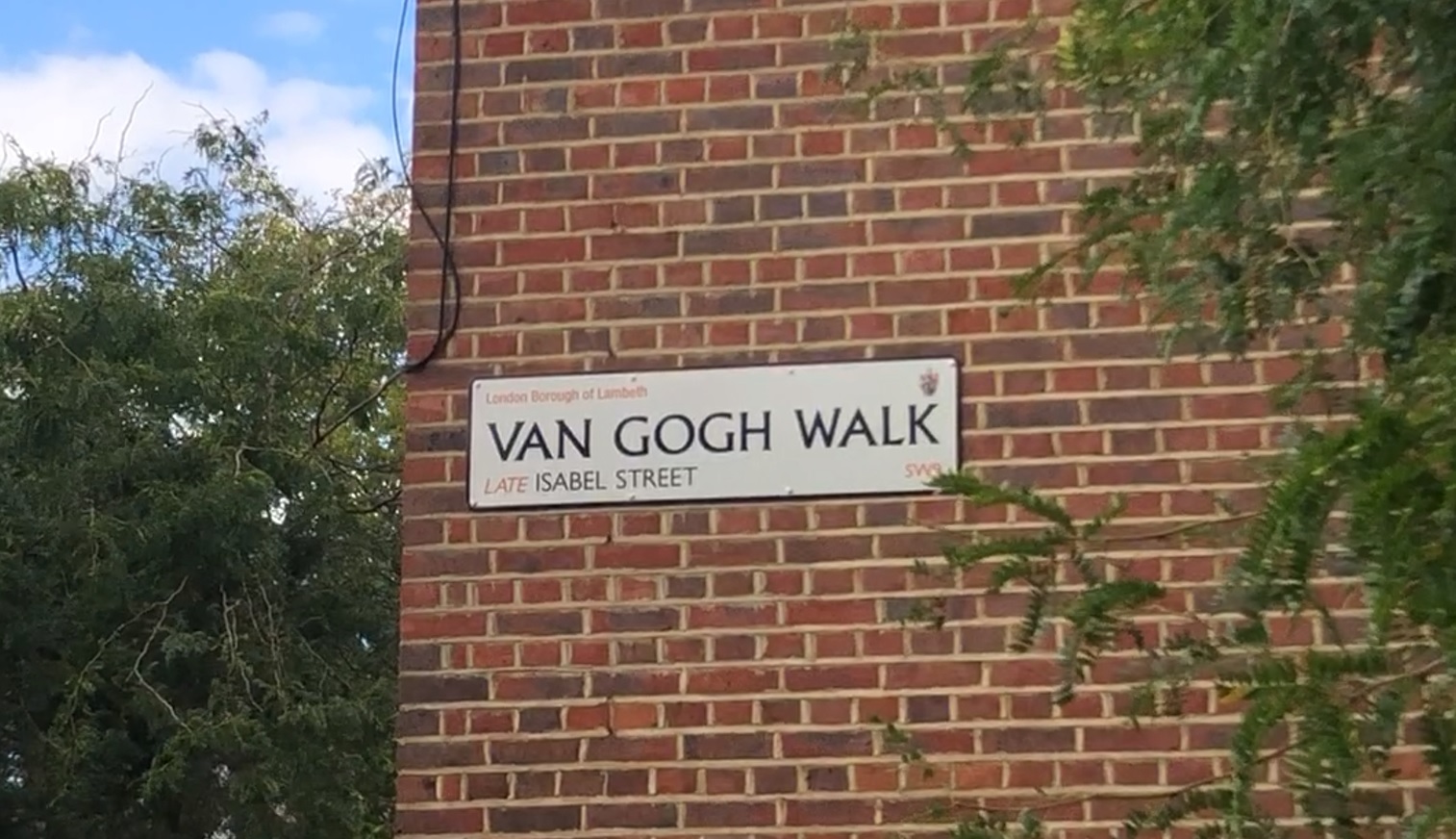Vincent Van Gogh’s London: 150 Years On
Which cities spring to mind when you think of van Gogh? Surely the Hague, Paris and various spots in the South of France. But did you know that Vincent spent over a year in South London between 1873 and 1874? A century and a half later, his spirit still marks the local area. I want to tell you about places that honour him today.
87 Hackford Road
In May 1873, years before he takes drawing and painting seriously, 20-year-old Vincent comes to London to work at Goupil’s, an art dealership in Covent Garden. Where he was first staying is unclear to this day, but we do know that in late August, he moved into 87 Hackford Road in Stockwell (or Brixton, if you like 😊). His landlady was Ursula Loyer, a widow, who lived there with her daughter Eugenie and ran a small house school in the front room.
Vincent occupied a spacious room on the top floor. In letters to his brother Theo, he seemed happy with both the room and the household in general. He chose to walk to work, which would take him about 45 minutes. Vincent strolled up Brixton Road – today very bustling, but in those days much quieter, with a river running alongside it. Back then, the whole area would have had a completely different, almost rural, character.
This brief and often overlooked era is said to be the best time of his life. It was a period of prosperity for the young Vincent. He earned quite a bit and was professionally fulfilled.
But he didn’t have as much luck in personal life. Eugenie rejected his advances, and his feelings for Ursula had no future either. (Listen to the brilliant BBC radio play Vincent in Brixton if you want to know more.) When things got really awkward, in August 1874, resigned Vincent moved into 395 Kennington Road. That building hasn’t survived, but fortunately, his former home resisted even the WWII bombings and stands strong today.

In 1973, the house was decorated with a blue plaque commemorating the centenary of van Gogh’s residence. A drawing of the house was discovered and immediately recognized as Vincent’s own (although some question its authenticity).
Having turned near-derelict by 2012, the house was thankfully saved by the Wang family. Since 2019, number 87 officially exists as Van Gogh House, an institution supporting contemporary artists. Twice a month, the House invites for an extensive tour of the property and the immediate area, including Vincent’s former bedroom. To stand in a space once so personal to him is priceless!


Van Gogh Walk
Around the corner, you’ll find Van Gogh Walk. This charming passage was opened in spring 2013, replacing Isabel Street. Now pedestrianized and full of greenery, it has a very park-like feel to it and reflects Vincent’s passion for walking and nature.
You’ll find the painter’s bust, plants inspired by his paintings and quotes from his letters. Children have lots of safe space to play far from the cars, and readers will love the book swap box. The space invites you to sit down on one of the many seats and ponder on how Vincent’s former stomping ground looked like 150 years ago.



Café Van Gogh
Walk a few minutes up Brixton Road and you’ll find Café Van Gogh in the grounds of Christ Church. It opened in 2015 and its décor is an impressive tribute to Vincent’s art, including the Starry Night-inspired ceiling upstairs.
The café is 100% vegan and supports people with learning and developmental disabilities. I’m yet to visit it, and when I do, I’ll make a separate post about it. (No, I won’t as the café sadly closed down in June 2024…)

